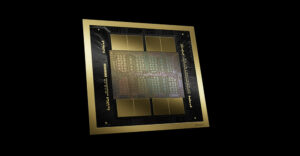
In the midst of the Game Developer’s conference in San Jose, Calif., last week, Microsoft announced that Windows Vista would miss its do-not-miss date. Then, Dell, which does not typically do acquisitions, bought the premier gaming PC builder Alienware. Each event has within it the potential to incite massive change.
The Gaming Battles
There are currently two world wars going on in the video game industry. The first and arguably most visible is the battle between Sony, Nintendo and Microsoft. The bloodiest part of this is between Sony and Microsoft, both of which are going for a newly found premium market. Sony owns this space right now, but it is a year later to market than Microsoft with its latest console and has massive cost and execution problems to overcome with the PlayStation 3.
Speculation is that Sony will probably have to slip the system again and will essentially give the market to Microsoft this year. However, on the sidelines, Nintendo is coming in with a lower-priced product, seems more focused on execution than Sony, and could easily steal the momentum in a market where the other players may increasingly look overpriced in comparison.
It is hard not to call Sony out at this point and suggest that the future console market, if Sony continues to have execution problems, will be divided between Microsoft and Nintendo. The biggest rumor at the Game Developer’s show was of a handheld gaming system from Microsoft which, when you factor in how much influence this company has in the PC gaming space and the increasing influence it has in cell phones and set top boxes, will have the largest footprint among all gaming vendors.
The other battle is between the graphics card makers for PC games — graphics cards have more impact right now than processors. The players are Nvidia (Nasdaq: NVDA), ATI and S3. Nvidia, with a quad-card mega product out and the highest performing dual card products, clearly has the performance advantage. However, S3 has a dual card solution that costs a fraction of what Nvidia’s does and provides performance that is more than adequate for the majority of video game players.
There are clearly both value and performance segments in this market, but ATI is neither as high performing as Nvidia nor as inexpensive as S3, which places it in the unenviable middle position. ATI’s product is most commonly found on laptops, but both Nvidia and S3 have been making huge inroads on ATI’s turf. It looks like, unless trends change, the future graphics market for gaming will increasingly be divided between Nvidia and S3.
Cell Phones, Reality Gaming
The cell phone is one of the most significant emerging platforms for video games, and a number of vendors are chasing this opportunity. One of the most interesting and most aggressive players in this space is RealNetworks.
The casual games that RealNetworks offers are increasingly popular among women, who represent the fastest growing gaming segment for casual games in general.
Another trend that’s significant is the fact that games are becoming vastly more lifelike — more realistic. The addition of voice, initially driven by Xbox Live on consoles and TeamSpeak on PCs, is now improving to VoIP (Voice over Internet Protocal) levels driven by Vivox. Adding the ability to talk to other players adds a significant amount of reality to gaming, particularly team games, and suggests that headphones — which work better than speakers and standalone microphones — are likely to become common tools for gamers.
Improvements in gaming artificial intelligence are also significant. A platform called AI.Implant is helping to drive this trend. AI.Implant specializes in easily giving game characters complex personalities so that the experience is more realistic. Characters act and react to players and to each other realistically and dynamically, which vastly improves the gaming experience.
Adding a physics engine makes the experience just short of real. A physics engine makes things move and interact realistically. Objects can hit other objects, water flows like water, grass moves like grass, wind blows hair, and clothing doesn’t look painted on. Leading this effort is Ageia.
When you put all three of these — voice, AI and physics — together, as a number of compelling new game titles are going to do, you get a gaming experience that is generations ahead of anything we’ve seen the past. This is the future of gaming.
Industrial Gaming
Once virtual reality is achieved, you can do things with games that go beyond entertainment. A forward-looking game called Second Life offers an amazing example. Within this game, you will find a financial area created by Wells Fargo that teaches personal finance, and you will find language sections that are used to immerse students in a language, as if they were living in a country where residents spoke it.
This game is used by business schools to teach entrepreneurial skills, because it better models what students will see in the real world. The game is also used by palsy, autism, and Asperger’s Syndrome sufferers, because it helps them learn how to better interact with others — the game helps them feel more normal.
If you think about it, gaming could have a bigger impact on future generations than almost any other commonly used technology. This might help explain Dell’s interest in Alienware.
Dell Gets Hitched
It wasn’t a shotgun wedding. Dell has, over the years, shown that it has vision. Now it is taking advantage of what is clearly one of the fastest-growing opportunities in the high-performance computing market. Alienware has enjoyed faster growth than its larger peers have, while enjoying better margins. Recently, Alienware has been showing impressive growth in the enterprise and in government, filling the need for performance PCs, workstations and servers in those segments. However, with the next big thing in the market expected to be mass customization, a company that is the leader in performance gaming and that also has experience in customization should be very valuable — with or without sudden strength in large accounts.
Dell clearly has seen the future — and understands the importance of performance. Alienware gets access to Dell’s phenomenal logistical skills with potentially substantial cost savings, and Dell gets a set of skills nearly unmatched in performance computing, one of the most powerful brands in the segment, and industrial design skills that will help it build products that even Apple customers may lust for. Oh, and it gets AMD, which effectively breaks the firm’s Intel-only model.
Of course, while Dell’s future is clearly improving, the slip of Microsoft Vista puts its fourth quarter at risk, along with everyone else’s.
Vista Slips, Microsoft Shuffles Deck
Vista, the next version of Microsoft Windows, was going to make or break the fourth quarter for PC sales, Now, its 2007 release date has given Apple an unprecedented opportunity to grow market share. The bad news for Apple is that it probably won’t get a second chance if it misses this one.
Microsoft’s news was not a good surprise for any of the major PC vendors. The executive leadership at Microsoft isn’t happy either. Late last week, the company announced a reorganization that should address the avoidance of similar problems in the future.
Given last week’s column it may appear that I am psychic, but in fact, execution problems like this are actually relatively easy to identify and correct. As a company grows, people don’t like to report or hear bad news, and issues like the ones Microsoft faces are often the result.
To address this, two of Microsoft’s top go-to guys now are tied to the problem. Brian Valentine, who is respected inside and outside Microsoft, is responsible for getting Vista out the door. I can think of no better person inside the company to do this. Working with him is Martin Taylor, a rising star inside the company who led its successful defense campaign against Linux.
Vista’s delay will be incredibly painful for Microsoft, but I believe a better product will result, and customer experience post-launch will be better, too. The slip will also probably result in some discounting and incentive programs from the PC vendors. All in all, this has been an interesting week — and we may learn later, a historic one.
Rob Enderle, a TechNewsWorld columnist, is the Principal Analyst for the Enderle Group, a consultancy that focuses on personal technology products and trends.






















































Maybe Dell just bought Alienware so that they would have systems that could run visa with all the bells and whistles. People thinking that their favorite Alienware dream system will drop in price now that Dell owns them are in for a dose of reality.
To think that MS will unseat Sony is crazy. The one thing that Sony has over MS in the console arena is developer contacts. They have more developers making games for the PS3 than MS does. Besides with fickle gamers that get upset because of delays with the 360 and it’s better games there are a lot of kids saving up their money for the PS3.